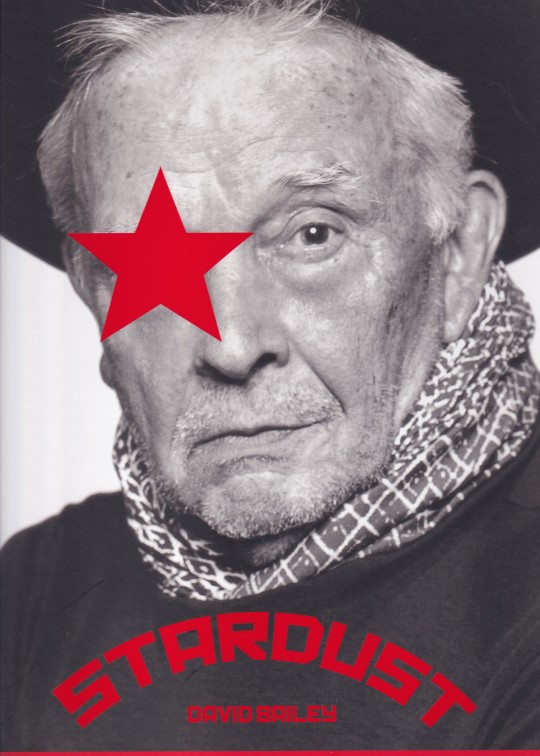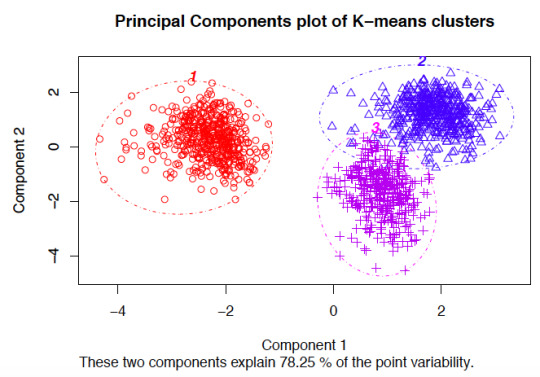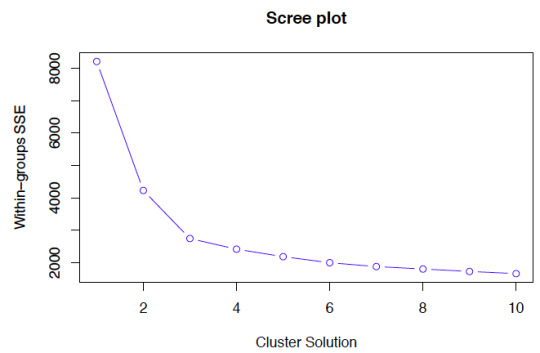#stata commands
Explore tagged Tumblr posts
Text


21 Marzo - GIORNATA DELLA MEMORIA DELLE VITTIME DELLA MAFIA A TRAPANI : I BAMBINI
Quest’anno siamo qui, a Trapani, io, mio fratello Salvatore e con noi, tutti gli altri, quelli che, come noi, sono morti per mano di qualcuno. Ho chiesto a Giuseppe che è morto quando aveva dodici anni, chi era questo qualcuno. Mi ha spiegato che qualcuno non è una sola persona, è una volontà, quella di comandare su tutti gli altri, di seguire una legge che non tiene conto del rispetto verso gli altri e del fatto che va contro quello che è giusto secondo quegli gli accordi chiamate “leggi” , che sono stati fatti per tutti gli uomini o che vengono da Dio. Chi ha questa volontà di comandare sugli altri, di sfruttare il lavoro degli altri di dare agli altri cose che li possono uccidere o fargli perdere l’anima, hanno diversi nomi: mafiosi, camorristi, e così via. Sono anime oscure, senza pietà e morale. Così li ha chiamati Giuseppe che queste cose le sa perché suo padre era un mafioso che aveva deciso di lasciare la strada del male per diventare un giusto. Allora i mafiosi hanno preso Giuseppe e lo hanno ucciso e poi lo hanno sciolto nell’acido. A Claudio invece, a 11 anni gli hanno sparato in fronte perché senza saperlo, aveva visto cose che chi fa il male, non volevano si sapessero. Lo stesso è capitato a Graziella a 17 anni e Giuseppe Letizia a 14 anni. Giuseppina invece mi ha detto che stava giocando quando un proiettile sparato per un regolamento di conti la raggiunse. Aveva 12 anni. Anche Dodò stava giocando a calcio e due proiettili sparati per lo stesso motivo lo hanno preso in testa e al fegato. Lui non si ricorda altro ma è morto dopo tre giorni senza sapere perché. Paolino aveva visto chi aveva sparato a suo padre ed è morto a 13 anni mentre cercava di scappare. Ho chiesto a mamma che è sempre con noi, se io e Salvatore, a 6 anni, avessimo visto cose che non dovevamo, o nostro padre era mafioso e voleva seguire la via dei giusti. Lei mi ha spiegato che noi siamo morti per caso, perché la nostra macchina stava passando vicino a quella di un giudice e c’è stata un’esplosione. Io e Salvatore siamo diventati una macchia di sangue su un muro a duecento metri dalla macchina distrutta con dentro quel poco che restava della mamma. Per questo mamma dice che oggi siamo qui, perché oggi torniamo a vivere ad essere insieme agli altri bambini che dicono i nostri nomi, perché solo una piccola parte di chi ci ha ucciso, ha pagato per quello che ci ha fatto. Torniamo per dire che il male che ci ha ucciso, non ha alcun diritto, alcuna giustificazione e per ricordare a tutti, che quel male che ci ha distrutto, non è un nome, una cosa, ma la parte malata dell’anima umana, quella che vive di soprusi e di torti, quella indifferente al dolore degli altri e nemica del giusto. Per questo siamo qui, perché ogni giorno a noi si uniscono sempre tanti, troppi altri bambini, morti mentre giocavano, mentre mangiavano o ridevano in altri parti del mondo ma uccisi sempre dalle stesse anime malate. Per questo siamo qui a Trapani, perché dobbiamo insegnare ai grandi l’orrore di un bambino che muore, il dolore che nasce da una ingiustizia, il peso orribile del donare infelicità, la necessità di essere giusti al di là di ogni altro egoismo. Quando avranno imparato tutto questo, forse solo allora gli uomini capiranno.
This year we are here, in Trapani, me, my brother Salvatore and with us, all the others, those who, like us, died at the hands of someone. I asked Giuseppe, who died when he was twelve, who this someone was. He explained to me that someone is not just one person, it is a will, that of commanding everyone else, of following a law that does not take into account respect for others and the fact that it goes against what is right according to those agreements called “laws”, which were made for all men or which come from God. Those who have this will to command others, to exploit the work of others, to give others things that can kill them or make them lose their soul, have different names: mafiosi, camorristi, and so on. They are dark souls, without mercy and morals. That is what Giuseppe called them, who knows these things because his father was a mafioso who had decided to leave the path of evil to become a righteous person. So the mafiosi took Giuseppe and killed him and then dissolved him in acid. Claudio, on the other hand, was shot in the forehead at 11 because, without knowing it, he had seen things that those who do evil, did not want known. The same thing happened to Graziella at 17 and Giuseppe Letizia at 14. Giuseppina, on the other hand, told me that she was playing when a bullet fired for a settling of scores hit her. She was 12. Dodò was also playing football and two bullets fired for the same reason hit him in the head and liver. He does not remember anything else but he died after three days without knowing why. Paolino had seen who had shot his father and died at 13 while trying to escape. I asked my mother, who is always with us, if Salvatore and I, at 6, had seen things we shouldn't have, or if our father was a mafioso and wanted to follow the path of the righteous. She explained to me that we died by chance, because our car was passing near that of a judge and there was an explosion. Salvatore and I became a bloodstain on a wall two hundred meters from the destroyed car with what little was left of our mother inside. This is why mother says that today we are here, because today we return to live to be together with the other children who say our names, because only a small part of those who killed us, paid for what they did to us. We return to say that the evil that killed us, has no right, no justification and to remind everyone, that the evil that destroyed us, is not a name, a thing, but the sick part of the human soul, the one that lives of abuse and wrongs, the one indifferent to the pain of others and enemy of the right. This is why we are here, because every day we are joined by many, too many other children, dead while playing, while eating or laughing in other parts of the world but always killed by the same sick souls. This is why we are here in Trapani, because we must teach adults the horror of a child dying, the pain that comes from an injustice, the horrible weight of giving unhappiness, the need to be just beyond any other selfishness. When they have learned all this, perhaps only then will men understand.
11 notes
·
View notes
Text
18.01 Central European Time
TRUMP HA GIURATO
E' il 47/o presidente degli Stati Uniti
Ora è ufficialmente (e nuovamente, ndr) il commander in chief. Con i suoi 78 anni, è il presidente più vecchio ad aver giurato (l'avreste mai detto al confronto col Biden? ndr).
Trump ha giurato sulla bibbia usata da Abraham Lincoln nel 1861 e su una che gli è stata regalata dalla madre nel 1955, quando il presidente eletto aveva solo nove anni.
Un minuto prima ha giurato il VicePresidente Jd Vance. Con i suoi 40 anni è il secondo più giovane VP di sempre (tal John C. Breckinridge aveva 36 anni quando fu nominato nel 1857).
via https://www.ansa.it/sito/notizie/mondo/2025/01/20/inauguration-day-trump-ha-giurato-e-il-47o-presidente-degli-stati-uniti-live_58415184-0a79-4577-b3a1-2eb823d8eb71.html
10 notes
·
View notes
Text
130 SOLDATI ISRAELIANI SI RIFIUTANO DI CONTINUARE A COMBATTERE

Una lettera aperta firmata da 130 soldati israeliani dichiara che non presteranno più servizio a meno che il governo non si impegni a raggiungere un accordo di cessate il fuoco nel territorio di Gaza.
La lettera inviata dai riservisti e dalle reclute del Corpo corazzato, del Corpo di artiglieria, dell’Home Front Command, dell’Aeronautica militare e della Marina è stata indirizzata al governo israeliano, tra cui il primo ministro Benjamin Netanyahu, i membri del gabinetto e il Capo di Stato maggiore dell’esercito. “Continuare la guerra a Gaza non solo ritarda il ritorno degli ostaggi dalla prigionia, ma mette anche in pericolo le loro vite”, si legge nella lettera, aggiungendo che sono stati uccisi più prigionieri durante gli attacchi israeliani di quanti ne siano stati liberati. “Noi annunciamo che se il governo non cambia immediatamente rotta e non lavora per raggiungere un accordo per riportare a casa gli ostaggi, non saremo in grado di continuare a prestare servizio”, si legge nella lettera. Secondo il quotidiano israeliano Haaretz , molti soldati si sono rifiutati di presentarsi per compiti di riserva che prevedono missioni specifiche, mentre altri stanno valutando se rifiutare.
In Israele si sono accese forti reazioni negative tra la popolazione e nell’esercito per non aver accettato alcun accordo di cessate il fuoco. Migliaia di israeliani stanno scendendo nelle piazze per chiedere il rilascio dei prigionieri e la fine della guerra a Gaza, chiedendo al governo di rispondere delle sue azioni per non essere riuscito a raggiungere un accordo.
___________________
Fonte: Haaretz; immagine di Pollinations AI

VERIFICATO ALLA FONTE | Guarda il protocollo di Fact checking delle notizie di Mezzopieno
BUONE NOTIZIE CAMBIANO IL MONDO | Firma la petizione per avere più informazione positiva in giornali e telegiornali

Se trovi utile il nostro lavoro e credi nel principio del giornalismo costruttivo non-profit | sostieni Mezzopieno
13 notes
·
View notes
Text














Stardust David Bailey
Con un saggio di Tim Marlow
Skira, Milano 2015, 272 pagine, 26x33,8cm, Inglese, ISBN 9788857227795
euro 58,00 - 50% €29,00
email if you want to buy [email protected]
Catalogo Mostra PAC 1 marzo 2 giugno 2015
Oltre 300 fotografie, alcune delle quali inedite, selezionate personalmente da David Bailey dal suo immenso archivio, ripercorrono più di mezzo secolo di carriera del grande artista.
Francis Bacon, Salvador Dalí, Johnny Depp, Bob Dylan, Mick Jagger, Man Ray, Bob Marley, Jean Shrimpton: una straordinaria galleria di attori, scrittori, musicisti, politici, registi, modelle, artisti, ma anche persone incontrate durante i suoi viaggi in Australia, India, Sudan e Papua Nuova Guinea; molti famosi, alcuni sconosciuti, tutti assolutamente coinvolgenti e memorabili. Nato a Londra nel 1938, negli anni Sessanta David Bailey si è affermato nella fotografia di moda come collaboratore di Vogue, divenendo uno dei più popolari esponenti del mondo della fotografia d’autore; la creazione di ritratti, geniali e spesso provocatori, è sempre stata un interesse centrale nella sua attività. Pubblicata in occasione della grande mostra milanese (co-prodotta da Comune di Milano, PAC Padiglione d’Arte Contemporanea e Tod’s) proveniente dalla National Portrait Gallery di Londra, la monografia è suddivisa per temi, con immagini iconiche affiancate da ritratti meno noti e inediti, ed è introdotta da un saggio dello storico dell’arte Tim Marlow. David Bailey, membro onorario della Royal Photographic Society, è considerato uno dei più grandi fotografi viventi. Nel 2001 è stato insignito del titolo di Commander of the Order of the British Empire, come riconoscimento per il suo impegno artistico. Ha recentemente pubblicato Bailey’s East End (2015). Tim Marlow, storico dell’arte inglese, autore di numerosi libri e presentatore di programmi radiofonici e televisivi, è direttore delle mostre della galleria londinese di arte contemporanea
18/01/24
#David Bailey#Stardust#photography exhibition catalogue#PAC Milano 2015#Francis Bacon#Mick Jagger#Joseph Beuys#Anna Piaggi#Jean Shrimpton#Salvador Dalì#Bob Dylan#Man Ray#Bob Marley#Jerry Hall#Jack Nicholson#Diana Vreeland#Grace Jones#Kate Moss#Vivienne Westwood
35 notes
·
View notes
Text
One woman too many
(Italian version and sources under the cut)
Shoshana Chatfield, U.S. Navy vice admiral and the only woman on the NATO military committee, has been fired by the Trump administration.
Chatfield, a Navy helicopter pilot, was the U.S. representative to NATO’s military committee. She flew missions in the Pacific and the Persian Gulf as a helicopter pilot, and led a team in Afghanistan.
The decision was announced by Admiral Christopher Grady, acting chairman of the Joint Chiefs of Staff, saying the administration wanted to take the position in a “different direction". No official statements have been released on the matter.
Chatfield's name was on a letter from the conservative American Accountability Foundation to Defense Secretary Pete Hegseth calling for the removal of “woke” officials, citing her speech at a 2015 Women’s Equality Day event, in which she said, “Investing in empowering women can unlock human potential,” and “Our diversity is our strength.”
It’s unclear whether the firing was ordered by Hegseth or Trump.
Her resignation follows the earlier firings of Admirals Linda Fagan, former Coast Guard commandant, and Lisa Franchetti, Navy's former chief, as well as Lieutenant general Jennifer Short, former senior military assistant to the defense secretary, General Charles Q. Brown Jr, former chairman of the Joint Chiefs of Staff, General Timothy D. Haugh, former commander of the U.S. Cyber Command and director of the National Security Agency, and General James Slife, former vice chief of staff of the Air Force.
Una donna di troppo
Shoshana Chatfield, viceammiraglia della Marina degli Stati Uniti e unica donna nel comitato militare NATO, è stata licenziata dall’amministrazione Trump.
Chatfield, pilota di elicotteri della Marina, era rappresentante degli Stati Uniti presso il comitato militare della NATO. Ha condotto missioni nel Pacifico e nel Golfo Persico come pilota di elicottero, e ha diretto una squadra in Afghanistan.
La decisione è stata comunicata dall'ammiraglio Christopher Grady, presidente ad interim dello Stato maggiore congiunto, affermando che l'amministrazione voleva portare la posizione "in una direzione diversa". Non sono state rilasciate dichiarazioni ufficiali in merito.
Il nome di Chatfield era in una lettera inviata dalla conservatrice American Accountability Foundation a Pete Hegseth, segretario della Difesa, nella quale si chiedeva la rimozione di funzionari "woke", citando il discorso fatto da Chatfield durante un evento del Women's Equality Day del 2015, in cui affermava: "Investire nell'emancipazione delle donne può sbloccare il potenziale umano", e "La nostra diversità è la nostra forza".
Non è chiaro se il licenziamento sia stato ordinato da Hegseth o da Trump.
Le sue dimissioni seguono i precedenti licenziamenti degli ammiragli Linda Fagan, ex comandante della Guardia costiera, e Lisa Franchetti, ex capo della Marina, nonché del tenente generale Jennifer Short, ex assistente militare senior del segretario alla Difesa, del generale Charles Q. Brown Jr, ex presidente dello Stato maggiore congiunto, del generale Timothy D. Haugh, ex comandante dello U.S. Cyber Command e direttore della National Security Agency, e del generale James Slife, ex vice capo di stato maggiore dell'Aeronautica militare.
Sources/Fonti:
https://www.nytimes.com/2025/04/07/us/politics/trump-us-military-nato-official-fired-chatfield.html
https://www.newsweek.com/us-admiral-nato-fired-purge-2056697
https://www.ilmessaggero.it/mondo/nato_ammiraglio_donna_licenziata_woke_difendeva_cause_diversita_e_inclusione-8767017.html
#politics#us politics#donald trump#firing#nato#women#shoshana chatfield#christopher grady#pete hegseth#linda fagan#lisa franchetti#jennifer short#charles brown jr#timothy haugh#james slife#politica#politica usa#politics corner
2 notes
·
View notes
Text
Save Big on STATA Homework Help with Statisticshomeworkhelper.com
Are you struggling with your statistics assignments and looking for reliable STATA homework help? Look no further! At Statisticshomeworkhelper.com, we offer exceptional support to help you ace your statistics assignments. To make your experience even better, we are excited to introduce two fantastic offers that can save you money while you achieve academic success.
Exclusive Offers Just for You
1. Get 20% Off on Your Second Order Are you already enjoying the benefits of our expert assistance? Good news! You can save even more on your next assignment. We are offering a 20% discount on your second order with us. Use the offer code SHHRSECOND20 at checkout and watch your savings grow.
2. Refer a Friend and Save 50% on Your Next Assignment Sharing is caring! If you have friends who could benefit from our services, refer them to Statisticshomeworkhelper.com. As a thank you, we will give you 50% off your next assignment when your friend places an order. Simply use the offer code SHHRREFER50 to take advantage of this amazing deal.
Why Choose Statisticshomeworkhelper.com?
Expert Guidance from Professional Statisticians Our team consists of highly qualified statisticians who are well-versed in various statistical software, including STATA. Whether you need help with complex data analysis or simple homework questions, our experts are here to provide you with the assistance you need.
Timely Delivery and 24/7 Support We understand the importance of meeting deadlines. Our team works diligently to ensure your assignments are completed on time, every time. Additionally, our customer support is available 24/7 to address any questions or concerns you may have.
High-Quality, Plagiarism-Free Work Quality is our top priority. We guarantee that all assignments are thoroughly researched, meticulously crafted, and free of plagiarism. With our help, you can submit your assignments with confidence, knowing they meet the highest academic standards.
How to Avail the Offers
Step-by-Step Guide to Using the Discount Codes
1. 20% Off on Your Second Order
Step 1: Complete your first order with us.
Step 2: On your second order, enter the code SHHRSECOND20 at checkout.
Step 3: Enjoy 20% off your assignment.
2. 50% Off When You Refer a Friend
Step 1: Refer your friend to Statisticshomeworkhelper.com.
Step 2: Your friend places an order and mentions you as the referrer.
Step 3: Receive the offer code SHHRREFER50 for 50% off your next assignment.
Step 4: Use the code on your next order to save 50%.
Make the Most of Your STATA Homework Help
Understand the Basics Before diving into your STATA assignments, make sure you have a solid understanding of the basics. Familiarize yourself with the software interface, basic commands, and functions. This foundation will make it easier to tackle more complex tasks.
Stay Organized Keep all your data, commands, and outputs well-organized. This will save you time and reduce errors. Create a system that works for you, whether it's through folders on your computer or a physical notebook.
Practice Regularly Practice makes perfect. Regularly work on STATA exercises to improve your skills. The more you practice, the more comfortable you'll become with the software.
Seek Help When Needed Don't hesitate to reach out for help when you're stuck. Our team at Statisticshomeworkhelper.com is here to provide the assistance you need to overcome any challenges you face with your STATA homework.
Additional Resources for STATA Homework Help
1. Online Tutorials and Courses There are numerous online resources available to help you learn STATA. Websites like Coursera, Udemy, and YouTube offer comprehensive tutorials and courses that can enhance your understanding of the software.
2. STATA User Manuals and Documentation The official STATA website provides detailed manuals and documentation. These resources are invaluable for learning about specific commands and functions.
3. Academic Journals and Articles Reading academic journals and articles that utilize STATA can provide insights into advanced applications and techniques. This can deepen your understanding and inspire new ways to approach your assignments.
Join Our Community of Successful Students
At Statisticshomeworkhelper.com, we are dedicated to helping students succeed in their academic endeavors. Our commitment to quality, affordability, and excellent customer service sets us apart. With our current offers, there has never been a better time to join our community of satisfied students.
Final Thoughts
Taking advantage of our special offers is a smart way to save money while ensuring you receive top-notch STATA homework help. Whether you're a new or returning customer, these discounts are designed to make your experience even more rewarding. Don't miss out on these limited-time offers—use the codes SHHRSECOND20 and SHHRREFER50 to unlock great savings today!
#homeworkhelp#academicsupport#statisticshomework#academicassistance#expertguidance#statistics#statisticsstudents#biostatistics#biostatisticsassignmenthelp
10 notes
·
View notes
Text
OPTIMUS PRIME ( Deluxe ) Movie Studio Series 112

Ed il primo modellino degli Studio Series dedicato al film di Transformers One, uscito in concomitanza proprio col lungometraggio, non poteva che essere quello di OPTIMUS PRIME! … anche se un po' fa strano, dato che al cinema il personaggio è perlopiù del tempo nelle fattezze di Orion Pax MA il giocattolo in questione è solo un classe Deluxe! :O

Infatti già fa strano questa declassazione di Optimus negli SS, dal consueto Voyager ad un Deluxe, quasi a ricreare una nuova scala per questo film rispetto agli omonimi di altri lungometraggi e serie, ma appunto avrebbe avuto più senso fare un Orion Pax Deluxe il quale poi si sarebbe tramutato in un Optimus Voyager, un po' come si vede appunto al cinema!
Oppure, a questo punto, ci si può aspettare MAGARI un'uscita futura di un Deluxe 2 pack con un Orion trasformabile ed un altro no senza il T-Cog, proprio per ricercare la fedeltà cinematografica! :D …No, eh? ^^'

Vabbè, elucubrazioni di ipotetiche uscite a parte, il ROBOT perlomeno è un Deluxe altino: non dico che raggiunga l'Op Earthrise, ma almeno rivaleggiucchia un po' con quello WfC Gamer Edition, suo collega poi in quanto a tematica d'aspetto. Infatti questa ennesima versione pre terrestre di Commander aggiungerebbe poco a quanto già visto negli anni passati: diciamo che non è barocco come i vari WfC dei videogiochi, ma più asciutto e con i soliti particolari classici, con gli avambracci però ora grigi e un'unico finestrone sul petto, questo fatto apposta in modo da far intravedere la Matrice al suo interno.

A proposito di accessori staccabili, sulla schiena il nostro si trova una sorta di zainata / coperchio un po' come quella dell'Optimus Siege, cui va messo a riposo l'accessorio con le bocche di fuoco frontali del veicolo cui si trasforma ( che però è un po' attaccato con lo sputo, diciamo ), così come le iconiche canne fumarie sulle spalle sono staccabili ed impugnabili, mentre come arma Optimus One ha solo l'ascia d'Energon in plastica azzurra trasparente.

Tornando all'aspetto del robot, a voler spaccare il capello in quattro, nonostante si presenti bene e ben dipinto con un rosso e blu scuretti ma brillanti, ci sarebbe il grigio che è sì metallico ma un po' troppo opaco, mentre il petto sovrasta parecchio l'addome che a sua volta soffocato dalle spallone, mentre la testa pare quasi annaspare in mezzo fra queste. Ma niente per cui strapparsi i capelli, per carità, ma magari in un Voyager queste inezie si potevano limare meglio… ;3

Anzi, ok, petto e spallone sono parte del design originale, quindi l'"inestetismo" è a monte e amen, teniamocelo nei modellini fedeli, vabbè.

A proposito poi di fedeltà al media, mi fa specie che abbia la faccia con la mascherina sulla bocca, che ci sarebbe stata bene una gimmick con una doppia testa o che con l'altra senza mascherina, ma ehi, è pur sempre solo un Deluxe! ^^'

D'altro canto, ripeto, è perlomeno altino come Dlx e stra -posabile, con tutto quello che si può volere nel pacchetto della posabilità medio alta, pure la testa che si alza notevolmente, pugni che ruotano, etc. Ah, quasi dimenticavo: ovviamente non ha le mani che si aprono, visto che E' SOLO UN DELUXE, ma può comunque "impugnare" la Matrice tramite dei perni su questa e delle fessurine sui pugni, ok.

Questo modello poi esce in contemporanea con la wave 1 dei Prime Changers, i Deluxe della linea principale del film, dove è presente anche lì un Orion Pax con però mascherina, ascia e canne fumarie di Optimus One, QUINDI a seconda dei punti di vista l'uno potrebbe essere ridondante verso l'altro e viceversa, laddove invece potevano essere complentari se il Prime Changer lo lasciavano con l'aspetto di Pax piuttosto che non pimparlo con quello di Prime, mah!

La TRASFORMAZIONE è grossomodo quella classica, riprendendo elementi dal succitato Siege, con il coperchio / tettuccio e le ruote scolpite che dall'interno delle gambe slittano all'esterno, e con il solito bacino che ruota ed i piedi che si drizzano; almeno nella parte anteriore c'è qualche novità, con il pannello frontale con la griglia che è ripiegato subito sotto il petto, mentre le spalle si abbassano a diventare dei moduli laterali anteriori, ANCHE SE poi le braccia restano in vista con i pugni che letteralmente agguanto dei perni sulle gambe per tenere unito il veicolo! ^^'

Ma è pur sempre una sorta di CAMION CYBERTRONIANO, che cerca di ricordare l'iconico Frightliner terrestre, anche se non so quanto senso abbia rappresentare Optimus così anche su Cybertron se non si porta appresso un rimorchio, ok, però diciamo che la novità delle parti laterali anteriori non è male, così come ora le canne fumarie usate come armi o razzi di spinta, a seconda della direzione.

Ad aggiungere potenza di fuoco ci pensa il summenzionato modulino da sistemare frontalmente con i due laser in più, solo che non c'è poi posto dove poterlo nascondere, nel camion, anche se ci sarebbe volendo proprio dietro il pannello cui lo si aggancia. L'ascia d'Energon invece trova spazio comodamente in mezzo alle gambe nella parte posteriore del mezzo.

Il fatto delle braccia in vista alla fine non da così fastidio, a dire il vero, dato che si mimetizzano bene ai lati del veicolo, mentre è davvero una furbata l'assenza di ruote effettive, sostituite da 4 ruotine essenziali, di cui quelle anteriori sono rosse e si confono tranquillamente nella parte frontale delle spalle.

Insomma, alla fine non è affatto un brutto modellino, con aspetto fedele in entrambe le modalità e trasformazione ben realizzata e non troppo complicata, ma che però non esprime le potenzialità del personaggio poichè "degradato" alla classe Deluxe, laddove le varie gimmick che già questo SS doveva avere ( faccia con o senza mascherina, laser frontali a scomparsa ) sono invece finite nella versione estemporanea ed esclusiva giapponese di classe quasi Leader, il Brave Commander.

Magari riducendolo di classe hanno voluto renderlo più conveniente anche a chi non colleziona per forza gli SS, e di conseguenza così tutti i successivi One Studio Series, ma speriamo, come dicevo sopra, che in qualche maniera recuperino prima o poi anche la versione di Orion Pax e senza T-Cog, giusto per completezza. :)
-Video recensione
#transformers#hasbro#generations#autobot#autorobot#recensione#review#optimus prime#commander#orion pax#transformers one#one#movie studio series
5 notes
·
View notes
Text
Do Your Statistical Analysis Assignment Using STATA: Tips from an Expert
STATA is a powerful statistical software package that can be used to perform a wide range of statistical analyses, from descriptive and analytical statistics to hypothesis testing and inferential statistics. However, STATA can be complex to learn and use, which can make it difficult for students to complete their statistical analysis assignments on their own.

As a STATA assignment help expert, I have helped hundreds of students succeed in their studies by providing them with the tools and knowledge they need to complete their assignments accurately and efficiently. Here are a few tips from me on how to do your statistical analysis assignment using STATA:
Choose the right statistical test. The first step is to determine the appropriate statistical test for your data and research question. STATA offers a wide range of statistical tests, so it is important to choose the one that is most appropriate for your needs.
Prepare your data. Once you have chosen the right statistical test, you need to prepare your data for analysis. This may involve cleaning the data, removing outliers, and transforming the variables into a format that is compatible with STATA.
Run the statistical test. Once your data is prepared, you can run the statistical test in STATA. STATA provides a variety of commands for running different statistical tests.
Interpret the results. Once you have run the statistical test, you need to interpret the results. This involves understanding the meaning of the output and determining whether the results support your research hypothesis.
Write a report. The final step is to write a report of your findings. The report should include a description of the data, the statistical test that was used, the results of the test, and an interpretation of the results.
If you are struggling with any of these steps, please don't hesitate to contact me for help. I am here to help you succeed in your studies.
#stata assignment help#statistics assignment help#do my STATA assignment#Education#University#Online Assignment Help#Academic solution
10 notes
·
View notes
Text
Mastering Panel Data Analysis in STATA: A Comprehensive Guide
In the realm of statistical analysis, STATA stands out as a powerful tool for unraveling complex datasets and deriving meaningful insights. One area where STATA excels is in panel data analysis, a technique frequently employed in econometrics and social sciences to explore trends over time and across different entities. If you've ever found yourself pondering the request, "write my STATA homework," rest assured that this comprehensive guide will not only tackle a challenging question related to STATA but will also provide a detailed answer, showcasing the prowess of the xtreg command. We'll navigate the intricacies of estimating the impact of a policy change on GDP per capita, incorporating fixed effects, time effects, and a covariate named "Investment." Whether you're a student seeking homework assistance or a researcher eager to unlock the full potential of STATA, this guide is tailored for you. Let's embark on a journey to master panel data analysis in STATA together.
Understanding the Challenge The question at hand revolves around conducting a panel data analysis using STATA, with a dataset encompassing three key variables: "Country," "Year," and "GDP_Per_Capita." The task involves estimating the impact of a policy change on GDP per capita, considering fixed effects for each country, time effects, and controlling for the potential influence of the covariate "Investment."
Constructing the Regression Model To tackle this challenge, we turn to the versatile xtreg command in STATA. Let's break down the command and understand each component:
stata // Load your dataset use "your_dataset.dta", clear
// Specify the regression model with fixed effects for countries and time effects xtreg GDP_Per_Capita Investment i.Country##i.Year, fe Loading the Dataset: The use command loads the dataset into STATA, replacing any existing data. Replace "your_dataset.dta" with the actual name of your dataset.
Dependent Variable: GDP_Per_Capita is the variable we want to analyze, representing the outcome of interest.
Control Variable: Investment is included to control for its potential influence on the dependent variable.
Fixed Effects and Time Effects: The i.Country##i.Year part of the command includes fixed effects for both countries and time effects. The double hash (##) indicates the inclusion of interaction terms between countries and years.
Estimation Method: The fe option specifies fixed effects estimation.
Rationale Behind the Model Fixed Effects: Including fixed effects for countries helps control for unobserved heterogeneity at the country level. Fixed effects for years account for time-invariant factors that might affect the dependent variable.
Interaction Terms: The interaction terms between countries and years allow for capturing time-varying effects that may differ across countries. This is crucial when dealing with panel data, where entities (countries, in this case) evolve over time.
Control Variable: Including "Investment" as a control variable ensures that we account for its potential impact on the dependent variable, isolating the effect of the policy change.
Practical Implications This regression model provides a robust framework for assessing the impact of a policy change on GDP per capita while considering various factors. The inclusion of fixed effects and time effects enhances the model's ability to isolate the specific effects of interest and control for confounding variables.
Conclusion Mastering panel data analysis in STATA requires a combination of understanding the theoretical underpinnings and practical application of the software. By addressing a complex question related to STATA and providing a detailed answer, we've explored the nuances of constructing a regression model for panel data analysis.
Whether you're a student grappling with econometric assignments or a researcher seeking to extract valuable insights from your data, the xtreg command in STATA proves to be a valuable ally. So, the next time you find yourself thinking, "write my STATA homework," remember that STATA's capabilities extend far beyond the surface, empowering you to unravel the intricacies of your datasets and draw meaningful conclusions. Happy analyzing! #STATA #DataAnalysis #Econometrics #WriteMySTATAHomework

12 notes
·
View notes
Text
Eagles fly above the ground at speeds between 190 and 240 kilometers per hour.
"Under the banner of the eagle"
Of all the birds that the ancients could observe, the eagle was perhaps the most admired for its power and majestic flight.
Many ancient armies, including those of Babylon, Persia, and Rome, marched under the banner of the eagle.
The army of Cyrus the Great was among them.
The Bible had prophesied that this Persian king, like a bird of prey, would come from the East to devour the Babylonian empire.
(Isaiah 45:1; 46:11) Two hundred years after the prophecy was written down, Cyrus' troops, whose battle standards depicted an eagle, fell upon the city of Babylon like a swooping eagle on the prey.
In more recent times, even warriors such as Charlemagne and Napoleon and countries such as the United States and Germany have chosen the eagle as their symbol.
The Israelites were commanded not to venerate images of eagles or other creatures.
(Exodus 20:4, 5) However, the Bible writers referred to the characteristics of the eagle to illustrate their message.
Thus the eagle, the bird mentioned most often in the Scriptures, is used among other things as a symbol of wisdom, divine protection and speed.
📚 Excerpt from the article:
"They will ascend with wings like eagles"
published by jw.org
Le aquile volano sopra il suolo a una velocità compresa tra 190 e 240 chilometri all'ora.
"Sotto l’insegna dell’aquila"
Di tutti gli uccelli che gli antichi potevano osservare, l’aquila era forse il più ammirato per la sua potenza e il suo volo maestoso. Molti eserciti antichi, fra cui quelli di Babilonia, Persia e Roma, marciavano sotto l’insegna dell’aquila. L’esercito di Ciro il Grande era fra questi. La Bibbia aveva profetizzato che questo re persiano, come un uccello da preda, sarebbe venuto dall’Est per divorare l’impero babilonese. (Isaia 45:1; 46:11) Duecento anni dopo che la profezia era stata messa per iscritto, le truppe di Ciro, sulle cui insegne di battaglia era raffigurata un’aquila, piombarono sulla città di Babilonia come un’aquila che si avventa sulla preda.
In epoche più recenti, anche guerrieri come Carlo Magno e Napoleone e paesi come gli Stati Uniti e la Germania hanno scelto l’aquila come proprio simbolo. Agli israeliti fu comandato di non venerare immagini di aquile né di altre creature. (Esodo 20:4, 5) Tuttavia gli scrittori biblici fecero riferimento alle caratteristiche dell’aquila per illustrare il loro messaggio. Così l’aquila, l’uccello menzionato più spesso nelle Scritture, è usata fra l’altro come simbolo di sapienza, protezione divina e velocità.
📚 Estratto dall'articolo:
"Saliranno con ali come aquile"
edito da jw.org
3 notes
·
View notes
Text
Who provides the best and cheapest thesis writing services?
✅ 1. All Homework Assignments
Best for: Full thesis writing support across subjects like Management, Nursing, Psychology, Education, and more Why it's the best + affordable:
Offers complete thesis services from topic selection to final proofreading
Experts hold Master's and PhD degrees
Strong in SPSS, R, STATA, Excel-based data analysis
Multiple revisions and plagiarism reports included
Transparent pricing and flexible packages for students
💡 Students often prefer it for its affordability and full support model. 📱 WhatsApp support: +971 50 161 8774
✅ 2. Programming Online Help
Best for: Technical and coding-heavy theses (AI, ML, Data Science, IT) Why it stands out:
Experts in Python, MATLAB, Java, R, and C++
Can handle implementation + academic writing
Clear code explanations, system architecture, and documentation
Very affordable for complex tech projects compared to big academic sites
💡 Great for students who want both a working project and thesis report at one place.
✅ 3. Statistic Homework Tutors
Best for: Research-heavy, statistical, and data-driven theses Why students love it:
Strong command of SPSS, STATA, R, SAS, Python
Clean hypothesis testing, regression, ANOVA, and model building
Ideal for Public Health, Finance, Economics, Sociology
Low-cost packages for research paper + data support
💡 Trusted by PhD students needing in-depth quantitative research help.
🧠 Why These 3 Are Better Than “Cheapest” Sites
While you’ll find many low-cost freelancers or random sites online, here’s why these three are better:
✅ Academic integrity: No AI or spun content
✅ Experienced experts: Actual subject specialists, not general writers
✅ Student-first pricing: They don’t overcharge or upsell unnecessarily
✅ Supportive process: Communicate directly, get drafts, ask for changes
🛑 Warning: Don’t Fall for Dirt-Cheap Offers
Be careful with:
Generic platforms offering “$5 per page”
Writers who won’t share samples
No communication, no revisions, no formatting
You might save a few bucks but risk failing your thesis.
✅ Final Verdict
If you're looking for the best and cheapest thesis writing services, choose a team that offers:
Quality + affordability
Academic understanding
Real support through WhatsApp or email
Revision guarantees
AllHomeworkAssignments, ProgrammingOnlineHelp, and StatisticHomeworkTutors check all these boxes — making them a safe and smart choice for students who want value, not just a price tag.
#thesis help#thesis assignment help#thesis homework help#thesis online experts#thesis support#thesis help online#best thesis writers#best thesis writing websites#best thesis programming
0 notes
Text

STATA Assignment Help
STATA is a powerful tool used to analyze data, statistics, and research. It is widely used by students studying economics, finance, sociology, and health sciences. While STATA has many beneficial aspects, it is not an easy tool for novice users. The majority of students find STATA assignments difficult because they require technical skills, analytical abilities, and in-depth understanding of data. With the help of professional assistance, you can make your assignment writing less hectic, and you will be confident about securing higher grades out of it. That's why The Tutors Help is available to provide you with the top STATA assignment assistance.
What Is STATA?
STATA is a computer program that allows users to handle, analyze, and graphically display data. It is applied for such things as:
Data manipulation
Statistical modeling
Hypothesis testing
Creating graphs and charts
Running regressions
Students usually have to use STATA to perform research assignments, assignments, and reports. Nevertheless, if you are new to the software, it is daunting to master all one needs to learn about its commands and operation.
Problem Students Encounter Using STATA Assignments
Understanding Difficult Commands: STATA is based on the use of commands, and memorizing the correct commands is difficult for new students.
Statistical Skills for Data Analysis: Students must have a proper understanding of statistics so that they interpret the output properly.
Time-Consuming Processes: Cleaning data, testing, and report generation take a lot of time, particularly when students have multiple deadlines.
Handling Mistakes: Small mistakes in code or inputs result in wrong results, which frustrates the assignment.
Why to Take The Tutors Help for STATA Assignment Help
We at The Tutors Help are fully conscious of the difficulties one might face while completing STATA assignments. We are prepared to help you right from the beginning. This is why we can be relied upon:
Experienced STATA Professionals: Our professionals are seasoned experts in completing STATA for all types of academic and research work.
Tailor-Made Assignments: We design each assignment as per your university's requirements and as per your specific needs.
Original Plagiarism-Free Work: We offer work written from the ground up and free of plagiarism.
On-Time Delivery: We honor your deadline and ensure that you receive your assignment on schedule.
Reasonably Priced: Our service is tailored to fit student finances without sacrificing quality.
How to Obtain STATA Assignment Assistance from The Tutors Help
Receiving expert assistance is quick and simple:
Submit Assignment Details: Provide us with the full assignment details of your STATA assignment, i.e., special requirements or data sets.
Get a Quote: We provide you with a reasonable and competitive price quote.
Work Starts: Our professionals start working on your project after it's agreed.
Review and Learn: Once delivered, you can learn from the step-by-step solutions that we offer and review the assignment.
Final Thoughts
STATA assignments are an important component of most course work, but they are stressful and troublesome too. Do not let technical issues spoil your marks. The Tutors Help stands ready to facilitate your study experience with the aid of STATA assignment help.
Get in touch with The Tutors Help and experience the high-quality STATA assignment assistance needed to finalize the marks you so justifiably deserve!
0 notes
Text
Optimizing Memory Allocation for Large Data in Stata Assignments
When you start learning about statistics and econometrics, especially when doing Stata assignments, managing memory effectively is very important. Stata is a great tool for analyzing data, but when working with large datasets, you might face issues like, “How can I make sure it runs smoothly?” or “Can I pay someone to do my Stata assignment because it keeps crashing?” Don’t worry—we’re here to explain how to optimize memory and help you succeed with your Stata tasks.
Why Understanding Memory Allocation Matters When Working on Stata Assignments

Efficient data processing in Stata relies on how well its memory works. When you work with big datasets with thousands or millions of records, wrong memory use can lead to both slow processing and unstable program behavior. For students seeking Stata assignment help, mastering memory settings is the difference between frustration and a smooth workflow. Understanding how Stata manages memory is a challenging topic, but you'll find it’s more straightforward than it seems. Stata only gives your data a limited amount of memory when you start working with it. Default settings work well for basic data work, but they won't give you enough memory when you need to process large economic data analyzing economic indicators or panel data with numerous time points.
Getting Started: How Stata Allocates Memory
Before we talk about ways to make things work better, let’s first see how STATA uses memory:
Memory for data: STATA stores your datasets in the computer’s RAM. This means if your dataset is big, it requires more memory.
Sort order and temporary files: Some stata commands, like sorting data, creates temporary copies of your dataset. This can use up even more memory.
Matsize setting: This decides how big the matrices (used in calculations) can be in memory. If you’re running models like regression with lots of variables and the matsize is too small, you might get errors.
Step-by-Step Guide to Optimize Memory Allocation in Stata Assignments
1. Increase the Memory Available to Stata Without Overloading Your System
To set memory parameters for Stata, enter "set memory." For instance:
set memory 2g
The command here lets Stata use 2GB of RAM memory. Just remember that running Stata takes space from other programs running on your computer, so adjust usage carefully. When you have a big project to work on, understanding exactly how much space your data takes up is the key. The describe command helps you learn about the memory usage of variables in your dataset. If needed, you can compress your dataset to save space:
compress
The command shrinks variable storage requirements, keeping previous levels of accuracy while freeing up room on your computer for other work.
2. Avoid Common Memory Bottlenecks by Managing Temporary Files
Memory use rises quickly when commands merge and append run on big datasets. Separate your operations into smaller tasks to prevent slowdowns. For example:
merge 1:1 id using dataset1_part1, nogenerate
Datasets can be divided into chunks before merging minimizes memory strain.
3. Change Matsize Setting When You Work With Big Data Models
Changing the matsize command lets you control how big your matrices stay in RAM. You need to adjust matsize when your model includes multiple predictor variables. For example:
set matsize 800
This command increases the matrix size limit to to 800, stopping regressions from crashing. Remember not to overdo, since it takes up more memory space.
4. Optimize Data Storage Formats to Minimize Memory Usage
Stata allows you to store variables having sizes of minimum of one byte storage (byte) up to maximum of eight bytes (double). When your data fits smaller types, don't use larger ones. It conserves memory on your computer. When a variable's values fall between 0 and 255, changing its storage from an int or float to byte saves valuable computer space.
Here’s how you can check and adjust variable types: compress
Or manually change variable types: generate byte age_group = age
Advice for Students Looking for Stata Assignment Help
If dealing with memory allocation feels too difficult, it’s okay to ask for help from experts. Whether you’re wondering, “How can I finish my Stata assignment without mistakes?” or “Can I hire someone to do my Stata assignment?” learning these ideas will help you work better with tutors or assignment helpers.
Keep in mind, improving memory allocation isn’t just about finishing your assignment; it’s a valuable skill that can make you stand out in data-driven jobs. If you ever feel stuck, Stata’s detailed guides and online communities are great places to find help.
Conclusion: Mastering Memory Allocation for Seamless Stata Assignments
By learning how to handle memory in Stata, you’re not only solving your current assignments but also preparing for bigger data analysis tasks. From adjusting `set memory` and `set matsize` to shrinking datasets, these methods keep your work efficient and stress-free. If you get stuck, professional Stata assignment help can guide you through the complexities, leaving you with more time to focus on insights rather than errors. Start using these strategies, play with Stata's features, and see how your work becomes better and better.
0 notes
Text
Running a K-Means Cluster Analysis
What is a k-means cluster analysis
K-means cluster analysis is an algorithm that groups similar objects into groups called clusters. The endpoint of cluster analysis is a set of clusters, where each cluster is distinct from each other cluster, and the objects within each cluster are broadly similar to
Cluster analysis is a set of data reduction techniques which are designed to group similar observations in a dataset, such that observations in the same group are as similar to each other as possible, and similarly, observations in different groups are as different to each other as possible. Compared to other data reduction techniques like factor analysis (FA) and principal components analysis (PCA), which aim to group by similarities across variables (columns) of a dataset, cluster analysis aims to group observations by similarities across rows.
Description
K-means is one method of cluster analysis that groups observations by minimizing Euclidean distances between them. Euclidean distances are analagous to measuring the hypotenuse of a triangle, where the differences between two observations on two variables (x and y) are plugged into the Pythagorean equation to solve for the shortest distance between the two points (length of the hypotenuse). Euclidean distances can be extended to n-dimensions with any number n, and the distances refer to numerical differences on any measured continuous variable, not just spatial or geometric distances. This definition of Euclidean distance, therefore, requires that all variables used to determine clustering using k-means must be continuous

Procedure
In order to perform k-means clustering, the algorithm randomly assigns k initial centers (k specified by the user), either by randomly choosing points in the “Euclidean space” defined by all n variables, or by sampling k points of all available observations to serve as initial centers. It then iteratively assigns each observation to the nearest center. Next, it calculates the new center for each cluster as the centroid mean of the clustering variables for each cluster’s new set of observations. K-means re-iterates this process, assigning observations to the nearest center (some observations will change cluster). This process repeats until a new iteration no longer re-assigns any observations to a new cluster. At this point, the algorithm is considered to have converged, and the final cluster assignments constitute the clustering solution.
There are several k-means algorithms available. The standard algorithm is the Hartigan-Wong algorithm, which aims to minimize the Euclidean distances of all points with their nearest cluster centers, by minimizing within-cluster sum of squared errors (SSE).
Software
-means is implemented in many statistical software programs:In R, in the cluster package, use the function: k-means(x, centers, iter.max=10, nstart=1). The data object on which to perform clustering is declared in x. The number of clusters k is specified by the user in centers=#. k-means() will repeat with different initial centroids (sampled randomly from the entire dataset) nstart=# times and choose the best run (smallest SSE). iter.max=# sets a maximum number of iterations allowed (default is 10) per run.In STATA, use the command: cluster kmeans [varlist], k(#) [options]. Use [varlist] to declare the clustering variables, k(#) to declare k. There are other options to specify similarity measures instead of Euclidean distances.In SAS, use the command: PROC FASTCLUS maxclusters=k; var [varlist]. This requires specifying k and the clustering variables in [varlist].In SPSS, use the function: Analyze -> Classify -> K-Means Cluster. Additional help files are available online.
Considerations
means clustering requires all variables to be continuous. Other methods that do not require all variables to be continuous, including some heirarchical clustering methods, have different assumptions and are discussed in the resources list below. K-means clustering also requires a priori specification of the number of clusters, k. Though this can be done empirically with the data (using a screeplot to graph within-group SSE against each cluster solution), the decision should be driven by theory, and improper choices can lead to erroneous clusters. See Peeples’ online R walkthrough R script for K-means cluster analysis below for examples of choosing cluster solutions.

The choice of clustering variables is also of particular importance. Generally, cluster analysis methods require the assumption that the variables chosen to determine clusters are a comprehensive representation of the underlying construct of interest that groups similar observations. While variable choice remains a debated topic, the consensus in the field recommends clustering on as many variables as possible, as long as the set fits this description, and the variables that do not describe much of the variance in Euclidean distances between observations will contribute less to cluster assignment. Sensitivity analyses are recommended using different cluster solutions and sets of clustering variables to determine robustness of the clustering algorithm.K-means by default aims to minimize within-group sum of squared error as measured by Euclidean distances, but this is not always justified when data assumptions are not met. Consult textbooks and online guides in resources section below, especially Robinson’s R-blog: K-means clustering is not a free lunch for examples of the issues encountered with k-means clustering when assumptions are violated.Lastly, cluster analysis methods are similar to other data reduction techniques in that they are largely exploratory tools, thus results should be interpreted with caution. Many techniques exist for validating results from cluster analysis, including internally with cross-validation or bootstrapping, validating on conceptual groups theorized a priori or with expert opinion, or external validation with separate datasets. A common application of cluster analysis is as a tool for predicting cluster membership on future observations using existing data, but it does not describe why the observations are grouped that way. As such, cluster analysis is often used in conjunction with factor analysis, where cluster analysis is used to describe how observations are similar, and factor analysis is used to describe why observations are similar. Ultimately, validity of cluster analysis results should be determined by theory and by utility of cluster descriptions.
0 notes